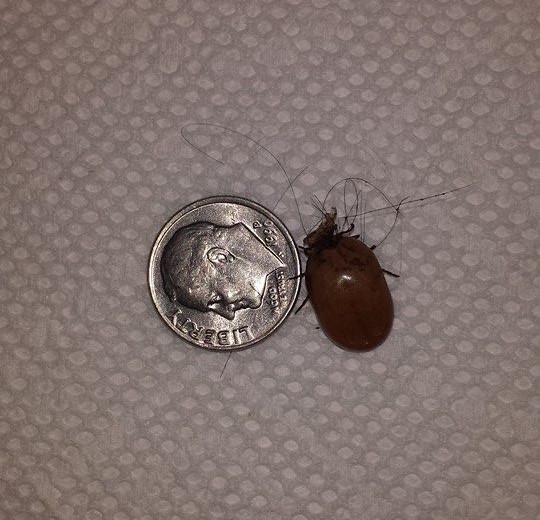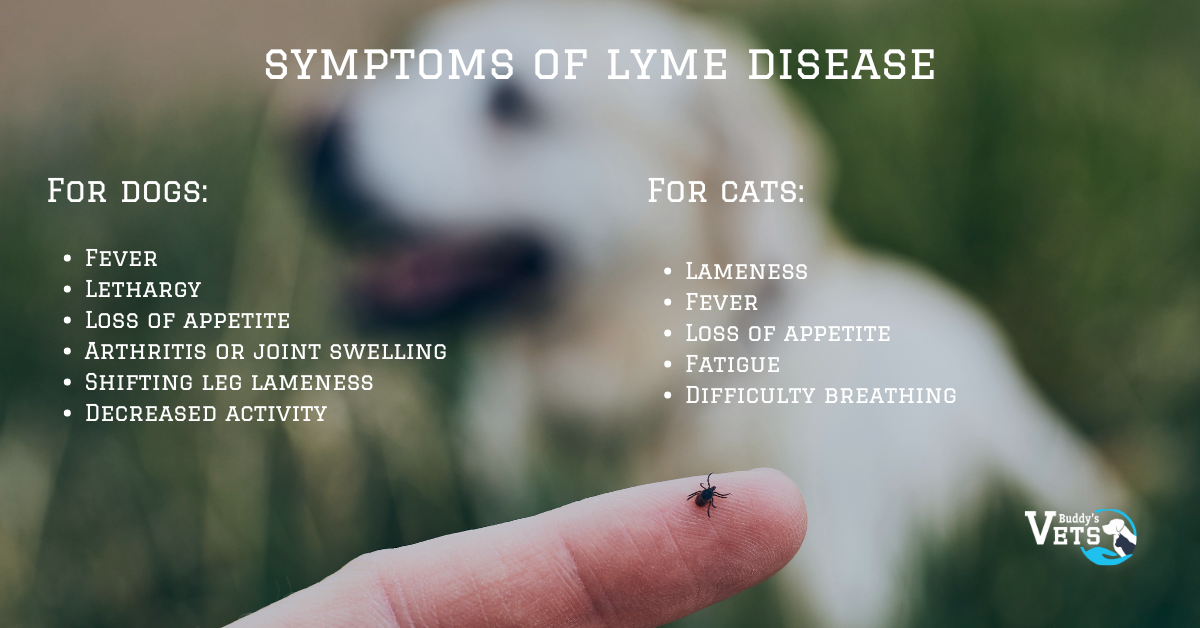The Battle Against Ticks -
Protecting Against Lyme Disease in Pets
Ticks are more than just a nuisance; they pose significant health risks to your pet, including Lyme disease transmission. Lyme disease in pets is serious. In 2023, according to the Companion Animal Parasite Council, 1 out of every 15 dogs in Wisconsin tested positive for Lyme disease compared to 1 out of every 30 dogs nationwide.
Why should we care about this? Lyme disease can cause severe health issues and can even be fatal for pets. Protecting your pet against Lyme disease begins with effective tick prevention. In this blog, we will cover the basics of ticks, the dangers posed by Lyme disease, and essential prevention tips to help you keep your pet safe and healthy.
Lyme Disease in Pets
Before diving into what Lyme disease in pets is, let's start at the source of it all - ticks. There are way too many species of ticks to name them all, but a tick is a tick, and ticks are bad. Ticks should scare you. Ticks are a year-round threat, and you should take them seriously.
There's a common misconception that ticks are just an "up north" or seasonal problem, which couldn't be farther from the truth. Ticks are in our backyards and live on various wildlife, including rodents, birds, and deer. They are very tiny and blow in on the wind.

Deer as seen from Dr. Becky Krull's backyard. Deer are a popular host for ticks.
Ticks prefer the cooler temperatures in the spring and fall and are most active when it's around 50-60°F, but that doesn't mean they aren't around in the summer or winter. During high summer temperatures, tick activity decreases as they seek shelter from the heat. In winter, when the leaves fall, and it snows on top of them, tick activity goes down. They like to burrow beneath. Tick activity soars as soon as the snow melts.
It is critical to understand that ticks don't simply disappear during unfavorable conditions. They remain a year-round threat and pose a significant health risk because they transmit diseases like Lyme to both humans and pets.
What is Lyme disease?
What is Lyme disease? Lyme disease first appeared in the 1970s in Lyme, Connecticut. At that time, a group of children and adults experienced various symptoms from a mysterious illness. Symptoms included swollen joints, rashes, headaches, and severe fatigue. They were undiagnosed for years until two mothers documented the cases and sought scientific help, eventually linking the illness to tick bites.
In the 1980s, further research identified the bacteria causing Lyme disease as Borrelia burgdorferi. Lyme disease is primarily carried and transmitted by the black-legged tick, also known as the deer tick. These ticks appear in forests, grassy, wooded, or marshy areas along rivers, lakes, and oceans. The disease gets transmitted through tick bites, and ticks may bite people or animals during outdoor activities such as hiking, camping, or even spending time in their backyards.

A tick removed from the ear of a Dachshund mix in Allouez, Wisconsin. Dime for size comparison.
Lyme disease is not transmitted from one animal to another except through tick bites. However, it is zoonotic, meaning it can transmit from animals to humans. Although Lyme disease originated in the eastern United States, it is becoming more common in other areas, including Wisconsin and Minnesota.
Symptoms
Pets infected with Lyme disease may not show signs for two to five months, and Lyme disease symptoms can be difficult to detect.

Fortunately for cats, they are highly resistant to the bacteria that causes Lyme disease and rarely show any signs. Lyme disease is much more common in dogs and humans than in cats.
Lyme disease and many other tick-borne diseases often go undetected until tested. At Buddy's Vets, we test for Lyme disease with a 4DX Snap test, which tests for four diseases in one test (Heartworm Disease, Lyme Disease, Ehrlichiosis, and Anaplasmosis). We gather the data from testing and pass it on to the Companion Animal Parasite Council to help assess the risk in our area.
Even if your dog tests positive for the Lyme antibody, it doesn't mean it has an infection of Lyme disease. Many times, we get a positive result, and your dog may not have any symptoms. What does this mean? It means your dog has been bitten by a tick that carries the Lyme bacteria, and the dog made an immune response against that bacteria, which is why it shows up positive for the Lyme antibody.
Before treating Lyme-positive dogs, we first want to know if the dog has an active infection or is sick. Options presented to the pet owner include doing the following:
A CBC chemistry and urinalysis,
A round of antibiotics or,
Nothing if the dog isn't symptomatic and may not have an active infection.
You will have conversations with your veterinarian about the right course of action for you and your pet. If you have more than one pet and one is diagnosed with Lyme disease, your veterinarian may recommend testing any other pets who may have had exposure to ticks at the same time.
Treatment
The primary treatment for Lyme disease in dogs is antibiotics. At Buddy's Vets, we typically administer Doxycycline for 28 days. Other veterinarians may use similar medications based on their comfort level and clinical judgment. Along with antibiotics, your veterinarian will guide you with the appropriate supportive care to help manage symptoms. Your dog will see your veterinarian for regular check-ups to monitor progress and adjust treatment as needed.
Prevention
Using tick preventatives, such as topical treatments, oral medications, and collars, is crucial to preventing Lyme disease in pets. At Buddy's Vets, we recommend a monthly dose of NexGard. It is important to administer tick preventatives monthly, year-round, to ensure continuous protection.

It's important to always discuss your pet's preventative needs with your veterinarian. If you have both dogs and cats, your cat should also be on a tick preventative, regardless of whether you consider your cat an "indoor only" cat.
Buying your preventatives from your veterinarian is essential, as products from big box stores or online stores may be counterfeit and lack guarantees. Your veterinarian can ensure the authenticity and safety of the products they provide, and you get to support a small business by buying locally.
You may still see and pull off ticks even with your dog on preventatives because ticks must bite your pet to ingest the preventative drug. While some topicals may have a repellent nature, their primary function is to kill the tick after it bites your pet. These products aim to achieve a quick tick knockdown time, meaning the tick dies shortly after biting and ingesting the medicine to prevent disease transmission.
When you find ticks on your pet, they should mostly be crawling. The best way to dispose of ticks is by flushing them down the toilet, as they are highly resilient pests.
Ticks Checks
Even with your pet on tick preventatives, it's still critical to check it thoroughly for ticks after any outdoor activities.

Use a lint roller to help remove ticks. Image credit here.
Protect Yourself
It's essential to take proactive measures to protect yourself from ticks to protect your pet. Avoid areas where ticks are common, such as tall grasses, marshes, and wooded areas. Cover your arms, legs, head, and feet with clothing to minimize skin exposure when venturing into these environments. Light-colored clothing can help you spot ticks more easily. Use insecticides or repellents designed for tick prevention on clothing and exposed skin. Once indoors, perform thorough tick checks and promptly remove any ticks before they can attach.
Maintaining a Tick-Free Environment
To reduce the presence of ticks around your home, take steps to manage your yard and surroundings by:
These measures help create a less hospitable environment for ticks, reducing the likelihood of encountering them around your home and in your yard.
Lyme Vaccine
Lastly, there is a Lyme disease vaccine for dogs to help safeguard your dog against Lyme disease. When deciding on vaccination, it's important to consider your pet's lifestyle, health, age, and potential vaccine reactions. You should consult with your veterinarian to determine whether your dog should receive the Lyme disease vaccine.
At Buddy's Vets, we strongly advocate for the Lyme vaccine. While it's not considered a core vaccine in our vaccination protocol, the prevalence of Lyme disease in our area suggests it should be.
Staying Vigilant Against Lyme Disease in Pets
Ticks are more than just a tiny nuisance; they carry and transmit diseases that pose serious health risks to you and your pet. There is no specific "tick season," as they are prevalent year-round across various regions in the United States. Lyme disease, in particular, is a significant illness, underscoring the critical need for preventive measures to protect your family and pets.
At Buddy's Vets, we encounter tick cases daily, reinforcing the need for vigilance in combating these parasites. Schedule a wellness check with your veterinarian or contact us directly to discuss Lyme disease awareness and tailored prevention strategies for your pet. Taking proactive steps can markedly reduce the threat of tick-borne diseases and ensure the ongoing health and safety of your beloved pets and family members throughout the year.
